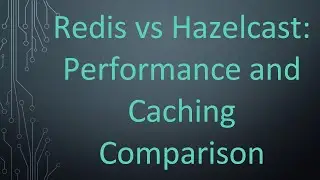How to Merge Two DataFrames in Pandas Based on Similar Columns
A step-by-step guide to merging two pandas DataFrames with similar columns effectively, ensuring the integrity of your time series data.
---
This video is based on the question https://stackoverflow.com/q/74291911/ asked by the user 'Eli Turasky' ( https://stackoverflow.com/u/9622066/ ) and on the answer https://stackoverflow.com/a/74292216/ provided by the user 'Naveed' ( https://stackoverflow.com/u/3494754/ ) at 'Stack Overflow' website. Thanks to these great users and Stackexchange community for their contributions.
Visit these links for original content and any more details, such as alternate solutions, latest updates/developments on topic, comments, revision history etc. For example, the original title of the Question was: Merge two dataframes based on some similar columns
Also, Content (except music) licensed under CC BY-SA https://meta.stackexchange.com/help/l...
The original Question post is licensed under the 'CC BY-SA 4.0' ( https://creativecommons.org/licenses/... ) license, and the original Answer post is licensed under the 'CC BY-SA 4.0' ( https://creativecommons.org/licenses/... ) license.
If anything seems off to you, please feel free to write me at vlogize [AT] gmail [DOT] com.
---
How to Merge Two DataFrames in Pandas Based on Similar Columns
Merging dataframes in pandas can sometimes be challenging, especially when dealing with time series data that has sequential timestamps. If you’ve ever tried to combine datasets and run into issues, you are not alone. In this guide, we will break down the process of merging two pandas dataframes based on similar columns efficiently.
The Problem: Merging DataFrames
You have two dataframes containing time series data, both with sequential timestamps. The structure looks as follows:
DataFrame 1 (df1)
[[See Video to Reveal this Text or Code Snippet]]
DataFrame 2 (df2)
[[See Video to Reveal this Text or Code Snippet]]
You want to merge these two dataframes into a new one (df3) with the expected structure as follows:
[[See Video to Reveal this Text or Code Snippet]]
The Solution: Using pd.concat()
To achieve this desired output, you can easily use the pd.concat() function in pandas. This function allows you to concatenate two dataframes along a particular axis, which is perfect in this scenario. Here’s the step-by-step approach:
Steps to Merge DataFrames
Import pandas: Ensure you've imported the pandas library.
[[See Video to Reveal this Text or Code Snippet]]
Create the DataFrames: Start by creating your two dataframes, df1 and df2 as illustrated in the problem.
[[See Video to Reveal this Text or Code Snippet]]
Concatenate DataFrames: Use pd.concat() to merge both dataframes.
[[See Video to Reveal this Text or Code Snippet]]
Handle NaN Values: After the merge, there might be NaN values where data is missing. You can fill these with any desired method (e.g., forward fill, backward fill, or leave as NaN).
[[See Video to Reveal this Text or Code Snippet]]
Final Output
By running the above procedure, you will get a merged dataframe df3 that reflects all data points aligned with their corresponding timestamps, filling in gaps appropriately.
Example Code
Here's the complete code:
[[See Video to Reveal this Text or Code Snippet]]
Conclusion
Merging two dataframes based on similar columns in pandas does not have to be complicated, even with time series data. By using the pd.concat() function effectively, you can maintain data integrity and structure. Now you can combine multiple dataframes and keep your data organized as it grows!
Happy coding!































